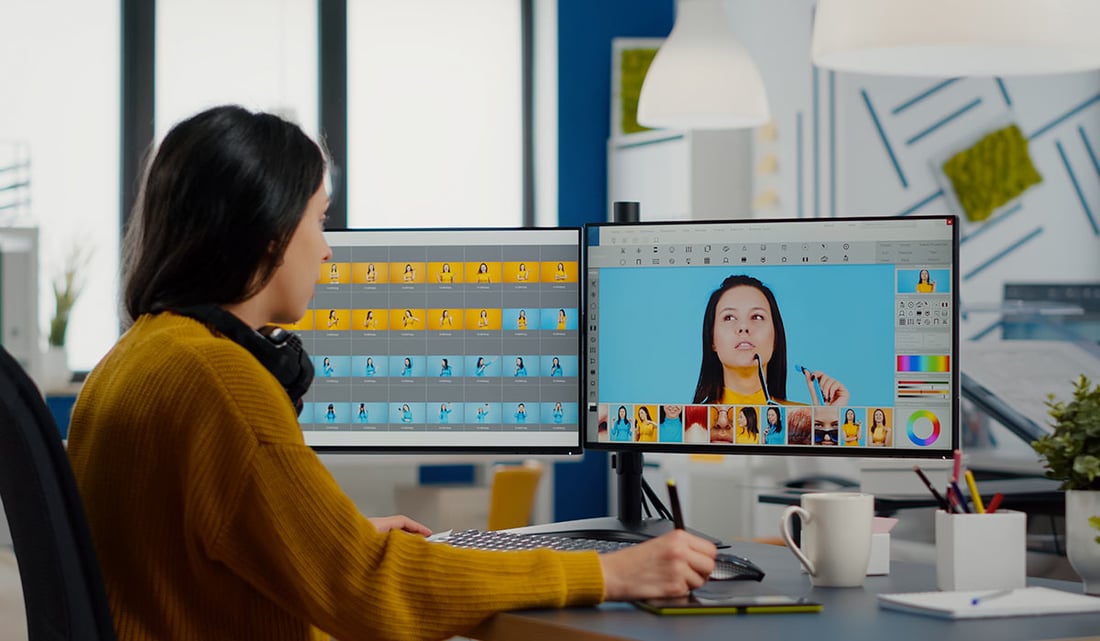Images. Infographics. Videos. GIFs and animations.
Americans spend nearly eight hours per day—yes, you read that right—consuming digital media.
With the rise of TikTok, a 60-second video platform; Instagram, a social media site now known for curated photos and reels; and Twitter, a place to express yourself in 280 characters or less; it’s become clear people crave their media in bite-sized chunks. They want to aimlessly scroll through their feeds, skim news and information, and access free micro-entertainment.
It should come as no surprise that journalists, influencers, and other media professionals welcome such content so they can feed the media beast—consistently engaging this generation of digital consumers. Reporters aren’t the only ones viewing multimedia press releases today, however. Consumers have greater access to directly view—and potentially share—multimedia assets. This means comms pros should optimize their press releases by adding multimedia to engage both reporters and customers.
Four Benefits of Distributing Multimedia
Adding multimedia to your press release or distributing standalone media provides a multitude of advantages.
Increases Engagement & Interaction
Multimedia’s ability to increase engagement is both biological and psychological. Humans interact in a variety of ways: They see and hear images, infographics, videos, and audio, and form an emotional connection to the overarching messages conveyed. This leads to engagement and interaction.
According to news, trends and tips hub Social Media Today, 72 percent of customers prefer learning about a product or service through video. The site also predicts 82 percent of all consumer internet traffic will come from online videos by 2022. What’s better than a regular video? An interactive one, which is typically watched completely through, 90 percent of the time. Such videos enable users to click within the video to incite specific actions. .
Improves Social Shareability
When you add an image, infographic or video to your press release, it immediately becomes more shareable. Consumers and reporters now have the option to extract the multimedia content and spread it on photo- or video-based platforms with little to no text. Visual content is 40 times more likely to get shared on social media than other types of content, states an associated article on marketing and sales platform HubSpot. Infographics are liked and shared three times more than other types of content, and 43 percent of all social media users share images.
Boosts Your SEO
Adding images, infographics, and videos that help support and explain your content can heavily improve your SEO. However, don’t just add an image or video to add it. Ensure it’s important to the overall message. When integrating video, make sure it has high-quality audio and visuals. For photos, verify they have alternative text and an image tag. To learn more about optimizing images, check out this guide. Not only does multimedia influence SEO, videos can increase conversion rates and make consumers more confident about making a purchase.
Enhances Your Chances of Earned Media Pickup
Just like consumers, journalists want multimedia content. According to the “News Direct Market Assessment” study, 86 percent of journalists find standalone media appealing. Plus, multimedia embedded in a press release or standalone multimedia gives journalists the freedom to utilize that content in the story they want to tell.
All of these benefits ultimately lead to link building, social shares, and increased targeted referral traffic and conversions. If consumers are able to engage, interact, and share your content, they’re more likely to visit your website or purchase your product. And reporters are easily able to utilize your multimedia assets in articles or blogs, increasing your company’s exposure.
Unlike any other wire service on the market, News Direct’s proprietary Digital Asset Direct™ enables PR and IR professionals to distribute standalone multimedia including images, videos, and infographics without embedding them in text releases. This cuts down on time spent writing a press release and the cost of paying for both text and multimedia content.
If you’re interested in learning more about our state-of-the-art news distribution platform, request a demo today!




